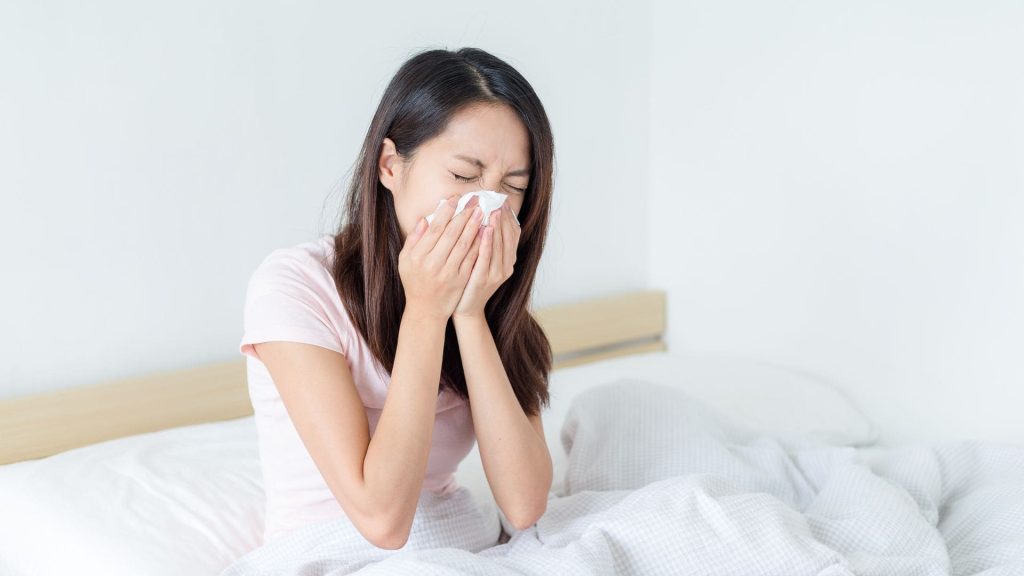Allergies are a growing concern in China, with allergic rhinitis and food allergies on the rise. An allergic reaction occurs when the immune system mistakenly identifies an allergen as harmful and reacts accordingly. The symptoms of allergies vary from sneezing to itchiness or hives. More severe cases are asthma triggers or anaphylaxis, these reactions can be life-threatening.
There are a variety of approaches to managing allergies in China, including traditional Chinese medicine (TCM), allergen immunotherapy (AIT), and antihistamine medications.
Need a cost effective TP (Tmall Partner) to sell in China?
We are an Official Tmall Partner e-commerce Agency. Our Services: E-Commerce, Search Engine Optimization, Advertising, Weibo, WeChat, WeChat Store & PR.
In this blog post, we’ll explore the different methods of the Allergies Management In China and their Market.
The Importance Of Allergy Management In China
Allergies pose significant public health, medical, and economic problems for the country. Allergic conditions like allergic rhinitis (AR) continue to rise. With it does the need for effective treatment strategies and preventive measures.
AIT is a critical component in managing AR by rebalancing patients’ immune response to allergens.
Allergies are not limited to respiratory ailments. Food allergies can also have severe implications on individuals’ well-being. Sesame allergy is an excellent example of how alarming these occurrences can be. US research reveals that people can develop sesame allergies without experiencing other food hypersensitivities.
This highlights why proper allergy management in China should involve raising public awareness about diagnostic solutions and advanced treatments while ensuring regular clinical follow-ups for affected individuals.

Overview Of the Allergies Management Market In China
The market is segmented into diagnostics, treatment, and preventive measures. Major players in the market include Stallergenes Greer and Thermo Fisher Scientific Inc. Some of the key drivers of the market include the rising:
- environmental pollution levels
- increasing awareness of allergies among consumers
- addressing the needs of consumers with food allergies.
Current Market Size And Growth Prospects
Allergies Management in China is a rapidly expanding industry with a promising future. The global market for allergy diagnostics is projected to reach $5.7 billion by 2022. China ranks as the fastest-growing market with an impressive CAGR of 15%. The US market is expected to grow at a CAGR of 7.2% from 2022 to 2027.
More and more people seek treatment and preventive measures to manage their symptoms. That why the opportunities for market players continue to expand.
Market Segmentation: Diagnostics, Treatment, And Preventive Measures
In the Allergies Management Market in China, there are three key segments related to allergies management:
- Diagnostics: involve identifying specific allergens through various testing methods (skin prick tests or blood tests)
- Treatment: traditional Chinese medicine, allergen immunotherapy, antihistamine medications, lifestyle changes, and environmental modifications.
- Preventive measures: reducing exposure to known allergens like air filtration systems or avoiding certain foods.

Major Players And Their Market Share
According to a recent report for 2023-2029, North America currently holds the highest market share (over 40%) of allergy diagnostics products. Europe follows them at around 30%. Specific companies dominate the Chinese market. There are several key players worth noting. Stallergenes Greer has emerged as a leader in allergen immunotherapy while Thermo Fisher Scientific Inc. dominates in allergy diagnostics products.
Market Drivers And Challenges
The biggest market drivers are rising environmental pollution levels, particularly air pollution. It increases the prevalence of allergic rhinitis (AR) among adults and children. The main challenge facing this market is addressing the needs of consumers with food allergies. There is a growing demand for products that cater to this market. But it can be difficult for manufacturers to ensure their products are safe and labeled well. This is due to potential cross-contamination issues.
Opportunities In The Allergies Management Market
Government Support And Policies
The Chinese government has recognized that allergies are a public health issue and has implemented various policies to address it. The government has mandated that medical insurance plans cover costs associated with allergy testing and treatment. Additionally, there are regulations in place on labeling requirements for food products to help consumers identify potential allergens.
Increasing Consumer Awareness And Demand For Better Products
With the rise in food sensitivities to pollen and mold, people are needing better products to help manage their symptoms.
There are increasing allergic reactions caused by cosmetics and fragrances. This leads them towards natural alternatives or fragrance-free products.
That’s why brands become more transparent about what goes into their products. Allergen-free options will only continue to grow.

Technological Advancements And Innovation
Digital health platforms allow patients to track their symptoms, triggers, and medication intake. These platforms also enable healthcare providers to track their patient’s progress remotely. With this comes personalized care and reducing the risk of allergic reactions.
Another innovative approach is precision medicine. This tailors treatment to an individual’s genetic makeup and environment. Doctors can identify potential problems before they arise rather than treat them reactively. With advances such as big data analytics, machine learning algorithms can analyze large quantities of patient data to identify patterns that would be difficult or impossible for humans alone.
Collaboration Between Domestic And International Players
This collaboration brings together experts from different regions with diverse approaches to allergy management. Western clinicians and Chinese researchers partnered to investigate sublingual immunotherapy. One example of a successful partnership is the Belt and Road Initiative. They offer significant opportunities for players in the allergies management market to collaborate on:
- research
- technology transfer initiatives
- joint ventures
- acquisitions that can facilitate entry into new markets.
Allergies In China
Allergic rhinitis is prevalent in China, affecting up to 20% of the population. House dust mites and pollen are the top allergens. The prevalence of allergic rhinitis has been on the rise, with pollen being the most commonly reported allergen.
Children in China are commonly allergic to eggs, while house dust mites, cockroaches, shrimp, crabs, and eggs are the top five sensitized allergens in southern China.
Regional differences play a significant role in the prevalence of specific allergens. The East region has higher rates of food allergies among asthma and rhinitis patients compared to the South and Southwest regions. Northern China has a higher parent-reported food allergy prevalence than Southern China. Self-reported food allergy incidence is around 18% in northern parts of the country.

How Chinese People Manage Their Allergies
Traditional Chinese Medicine (TCM) Approach
Chinese people turn to TCM approaches such as acupuncture and massage therapy for allergy relief. Chinese herbal medicine is commonly used to manage allergic rhinitis. Clinical studies suggest that TCM may also have beneficial effects on asthma. It reduces airway inflammation and improves lung function.
Allergen Immunotherapy (AIT)
AIT works by exposing patients to small doses of allergens over time. This desensitizes their immune system and reduces their allergic reactions.
China currently has more than 400 million allergic individuals, making it the world’s most populous country for allergy sufferers.
So AIT is becoming increasingly recommended in the Chinese guideline for allergen immunotherapy for allergic disorders due to inhalant allergens.
Antihistamine Medications
In China, H1 antihistamines are widely used for treatment.
But it’s worth noting that non-allergic factors may be a reason why they’re not effective in some cases.
Medications can provide much-needed relief when used correctly in conjunction with other treatments mentioned above.
Lifestyle Changes and Environmental Modifications
Reducing exposure to allergens by keeping windows closed and using air purifiers can go a long way in preventing allergic reactions.
Additionally, making dietary adjustments such as avoiding certain foods or taking supplements may help ease symptoms. Stress management is also important because it can exacerbate allergy symptoms.
Using air purifiers and vacuuming frequently to avoid triggers such as certain foods or harsh cleaning chemicals. For example, studies have shown that exposure to ambient atmospheric pollutants in Northeast China has been linked to an increased incidence of allergic conjunctivitis (IAC).

Future Of Allergies Management Market In China
Global Allergy Diagnostics Market Projection
The global allergy diagnostics market is expected to grow, creating opportunities for companies to develop diagnostic tools like:
- skin prick tests
- blood tests
- immunoglobulin E testing kits
- molecular diagnostic tests
- spirometry.
The growth is due to rising allergy awareness and demand for better diagnostic accuracy.
Trends In The Food Allergens And Intolerance Testing Market
The Asia-Pacific food allergen and intolerance testing market is projected to grow at a CAGR of 7.1% by 2029.
The market is testing types, methods, and end-user. There is a growing demand for reliable allergy diagnoses in China and Poland. This has led to companies developing new diagnostic tests and collaborating with international players.
Chinese Guideline On Allergen Immunotherapy For Allergic
Individuals with allergies in China can receive targeted treatment backed by expert opinions. The sublingual immunotherapy guideline for treating allergic asthma and rhinitis was developed by a panel of experts in China. This indicated an emphasis on evidence-based practices in allergy management. As a result, children suffering from common allergies like food and venom are eligible to receive this type of therapy as well.
The Role Of Artificial Intelligence And Machine Learning In Allergy Management
AI-based technologies can improve the accuracy of different diagnostic methods used in asthma diagnosis from classical to cellular methods. Traditional food allergen identification relies on in vivo and in vitro experiments that can be time-consuming and expensive. AI-based methods offer alternative approaches for identifying allergens, thus reducing associated costs.
Potential Impact Of Environmental Factors And Climate Change On The Market
Climate change, urbanization, and biodiversity loss are exacerbating respiratory health issues such as asthma and allergic respiratory diseases. These factors can increase allergen exposure indoors and outdoors due to changes in temperature, humidity, and air quality.

Conclusion
There is an increasing demand for better allergy management products and services, which presents a significant opportunity for companies operating in this sector.
It is evident that there are significant opportunities for growth. China’s Allergies Management Market size will definitely increase. Factors that help this are:
- increasing consumer awareness
- demand for better products
- government support and policies
- technological advancements and innovation
- collaboration between domestic and international players
Air pollution and climate change are potential drivers for the increasing burden of allergic diseases in China. The lack of data on allergen component-resolved diagnosis also poses a challenge within this field.







